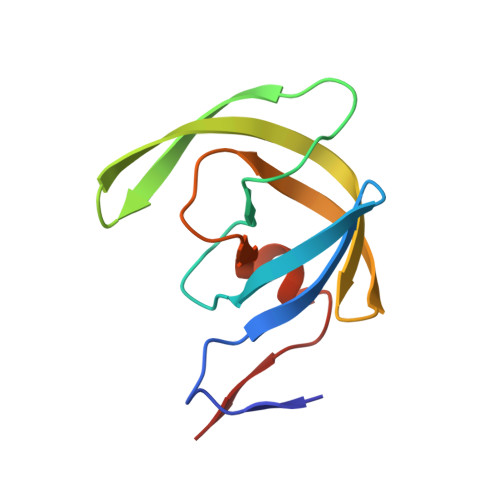Novel HIV PR inhibitors with C4-substituted bis-THF and bis-fluoro-benzyl target the two active site mutations of highly drug resistant mutant PR S17 .
Agniswamy, J., Kneller, D.W., Ghosh, A.K., Weber, I.T.(2021) Biochem Biophys Res Commun 566: 30-35
- PubMed: 34111669
- DOI: https://doi.org/10.1016/j.bbrc.2021.05.094
- Primary Citation of Related Structures:
7MYP, 7MYY - PubMed Abstract:
The emergence of multidrug resistant (MDR) HIV strains severely reduces the effectiveness of antiretroviral therapy. Clinical inhibitor darunavir (1) has picomolar binding affinity for HIV-1 protease (PR), however, drug resistant variants like PR S17 show poor inhibition by 1, despite the presence of only two mutated residues in the inhibitor-binding site. Antiviral inhibitors that target MDR proteases like PR S17 would be valuable as therapeutic agents. Inhibitors 2 and 3 derived from 1 through substitutions at P1, P2 and P2' positions exhibit 3.4- to 500-fold better inhibition than clinical inhibitors for PR S17 with the exception of amprenavir. Crystal structures of PR S17 /2 and PR S17 /3 reveal how these inhibitors target the two active site mutations of PR S17 . The substituted methoxy P2 group of 2 forms new interactions with G48V mutation, while the modified bis-fluoro-benzyl P1 group of 3 forms a halogen interaction with V82S mutation, contributing to improved inhibition of PR S17 .
- Department of Biology, Georgia State University, Atlanta, GA, 30303, USA.
Organizational Affiliation:



















